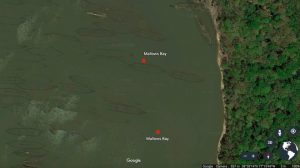Nearly 200 military shipwrecks — dating as far back as the Revolutionary War and including ships from the Civil War and both World War I and World War II — were deliberately sunk over centuries, in an area of the Potomac River called Mallows Bay, in Maryland. Over time, this so-called ghost fleet of wooden ships has come to serve as habitat for local wildlife.
But is this artificial ecosystem stable? Researchers recently investigated how the shipwrecks have changed over time; their findings, presented on December 13 at the annual meeting of the American Geophysical Union (AGU), explained how the bodies of the ships weathered river conditions — in some cases for hundreds of years — and how that might affect the future of the ghost fleet ecosystem.
After comparing known ship positions across different maps, they discovered that some ships were definitely not staying put — most of the ships were shifting eastward, some by as much as 32 kilometres, they reported.
Natural forces that affected the ships included storms, floods and erosion, according to 10-year-old Annabelle Naught. The best-preserved parts of the shipwrecks were deeply embedded in mud, while the exposed parts showed greater signs of deterioration, explained Kharylle Deramos, age 10.
read more at livescience.com
Ask me anything
Explore related questions





